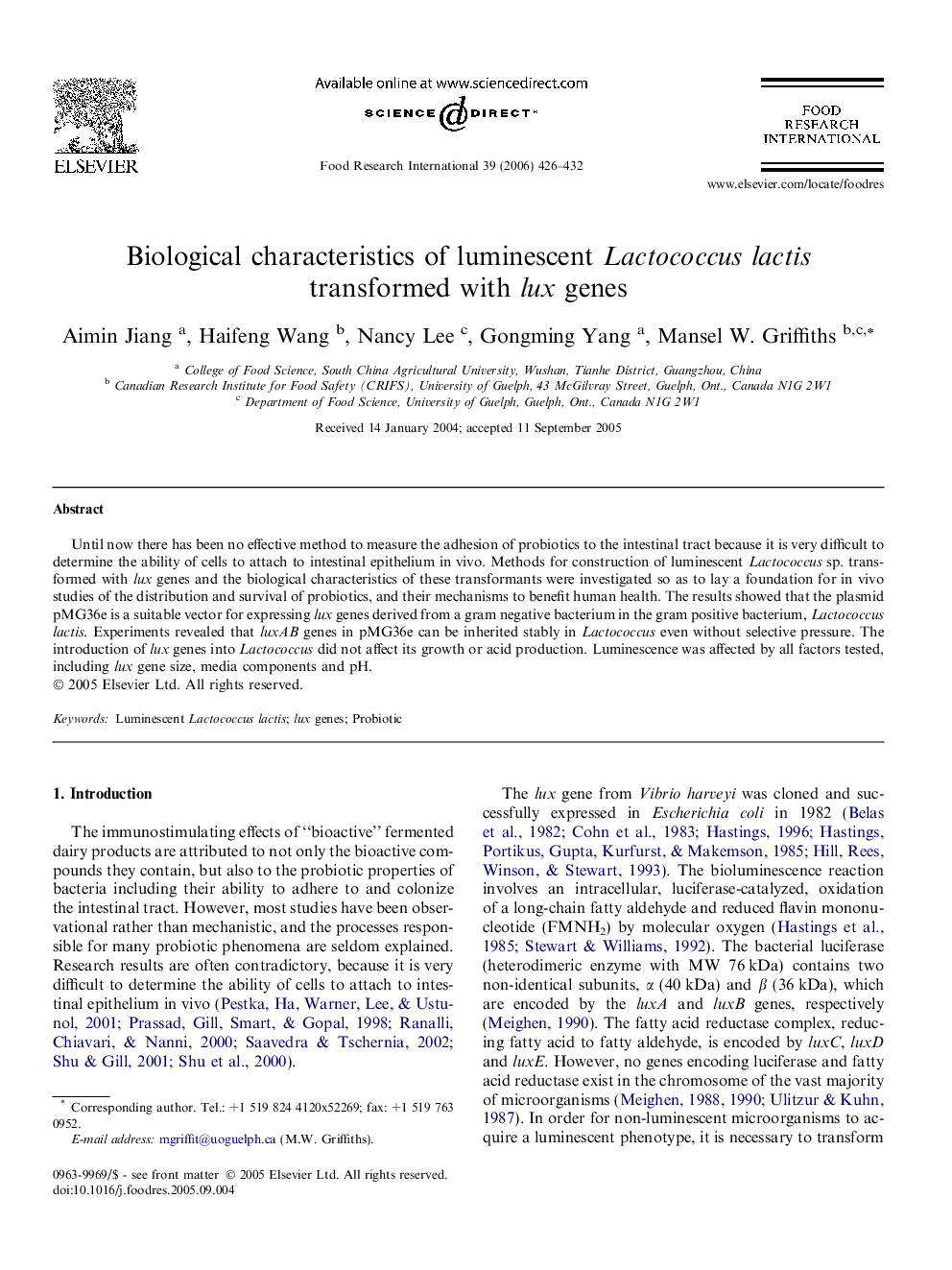| Article ID | Journal | Published Year | Pages | File Type |
|---|---|---|---|---|
| 4563205 | Food Research International | 2006 | 7 Pages |
Until now there has been no effective method to measure the adhesion of probiotics to the intestinal tract because it is very difficult to determine the ability of cells to attach to intestinal epithelium in vivo. Methods for construction of luminescent Lactococcus sp. transformed with lux genes and the biological characteristics of these transformants were investigated so as to lay a foundation for in vivo studies of the distribution and survival of probiotics, and their mechanisms to benefit human health. The results showed that the plasmid pMG36e is a suitable vector for expressing lux genes derived from a gram negative bacterium in the gram positive bacterium, Lactococcus lactis. Experiments revealed that luxAB genes in pMG36e can be inherited stably in Lactococcus even without selective pressure. The introduction of lux genes into Lactococcus did not affect its growth or acid production. Luminescence was affected by all factors tested, including lux gene size, media components and pH.
